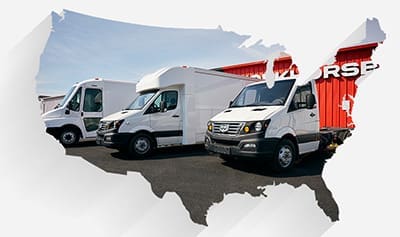Good News: Incentives are taking the edge off upfront EV costs
Regardless of the size of your business or where you live, the transition to a zero-emission fleet will come with challenges. Some will be the learning curve. Some will be infrastructure related. Others will be financial.
Yet things are improving on all fronts.
On the infrastructure side, the Bipartisan Infrastructure Law allocates over $65 billion to modernize the nation’s power grid, plus additional tax incentives for new transmission lines, transformers, and other grid equipment. These improvements will enable electrical grids to meet the growing power demands from fleet electrification
Lowering the learning curve is the fact that the complexity of managing routes due to range concerns is diminishing. The energy density of batteries and efficiency of power electronics has increased to the point where a substantial amount of commercial truck duty cycles can be electrified. As an example, a recent study by RMI showed that up to 65% of medium-duty trucks and 49% of heavy-duty trucks in New York and California could go electric.
Yet one of the biggest obstacles remains that an electric vehicle can cost between 50 to 100 percent more than an ICE truck. But there is help there too.
Below summarizes some of the state and federal incentives available to take a bite out of those upfront costs:
Federal 45W Tax Credit: Energizing your bottom line
The Federal 45W tax credit is a powerful incentive designed to encourage the adoption of commercial electric vehicles (EVs) by making them more affordable. Private and government entities can qualify for up to $40,000 per vehicle in tax credits, presenting a substantial benefit for those contemplating a greener and more cost-effective fleet.
Source: IRS Commercial Clean Vehicle Credit
State Incentives: Powering up savings across the nation

Beyond the federal level, many states are championing the transition to electric commercial vehicles by offering additional incentives. Below are few of the top states for commercial EV incentives. In addition, an extensive list of current state incentives, including utility programs, is available on the US DOE’s Alternative Fuels Data Center website.
California: Known for its progressive environmental policies, California offers a range of incentives, including rebates and grants to businesses embracing electric fleets.
Learn more about California incentives
Source: HVIP
Massachusetts: Rebates on the purchase or lease of electric trucks are available to private businesses, universities, non-profits, and municipalities in Massachusetts.
Learn more about Massachusetts incentives
Source: MOR-EV
New York: The Empire State supports the electrification of fleets through a combination of rebates, tax credits, and other incentives.
Learn more about New York incentives
Source: NYTVIP
Pennsylvania: Businesses in Pennsylvania can benefit from grants and rebates to offset the costs of electric vehicles and charging infrastructure.
Learn more about Pennsylvania incentives
Source: PA AFIG
Texas: The Lone Star State provides various incentives and grants aimed at reducing emissions and promoting the use of electric vehicles in commercial applications.
Learn more about Texas incentives
Sources: TxVEMP and TCFP
Partnering for Success: Navigating the transition with expertise
Take the next step towards a sustainable and cost-effective fleet by partnering with Workhorse. All Workhorse electric trucks quality for both Federal and State incentive programs. Class 4-6 trucks are available now for immediate delivery, including the W56 Class 5/6 step van, W750 Class 4 step van, and the versatile W4 CC Class 4 cab chassis.
Contact us or visit our website to learn more about incentives and funding opportunities and to find a Workhorse Certified Dealer near you.